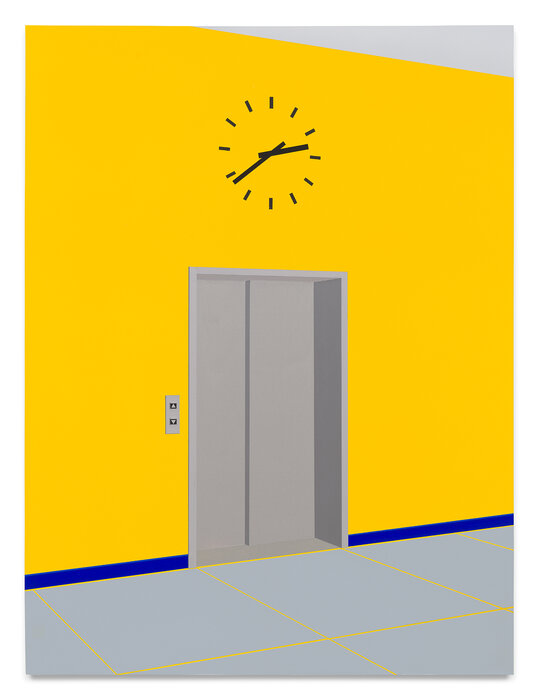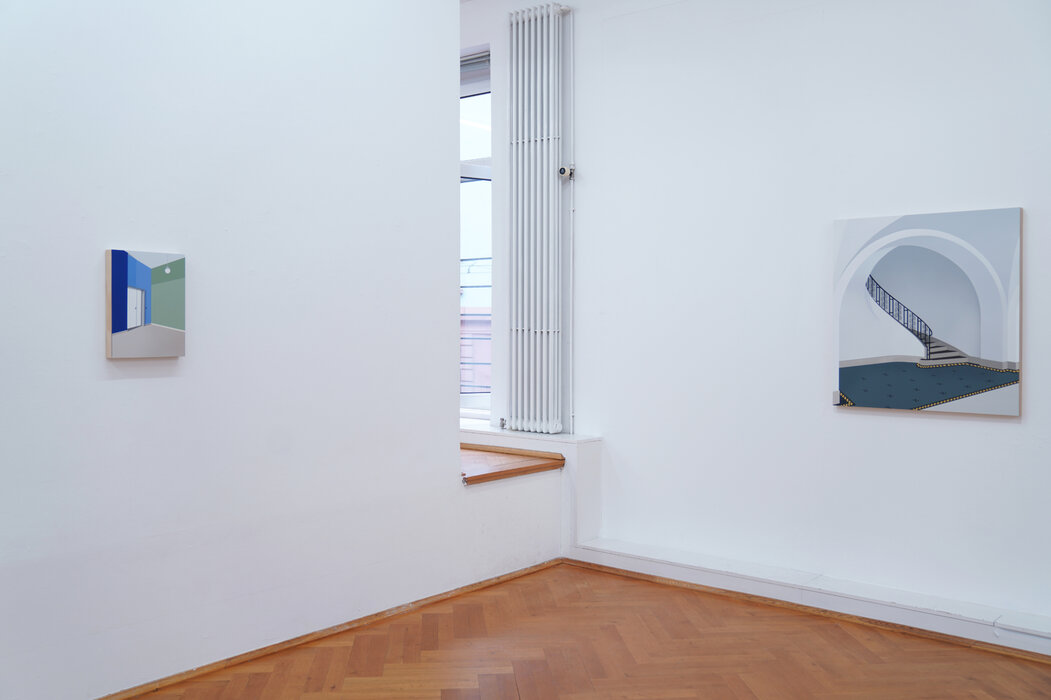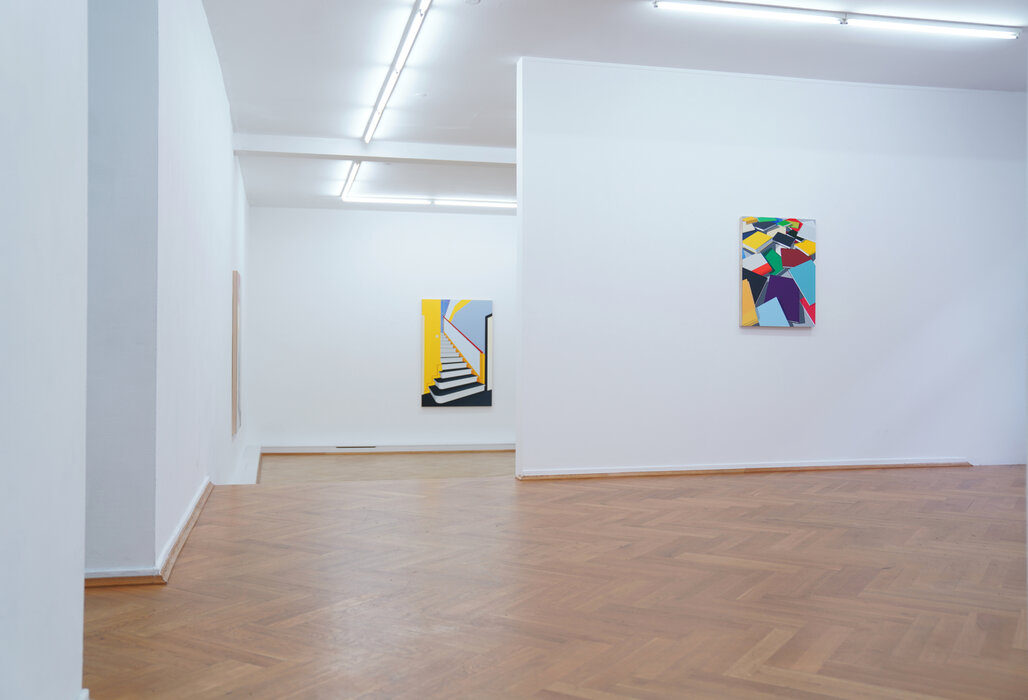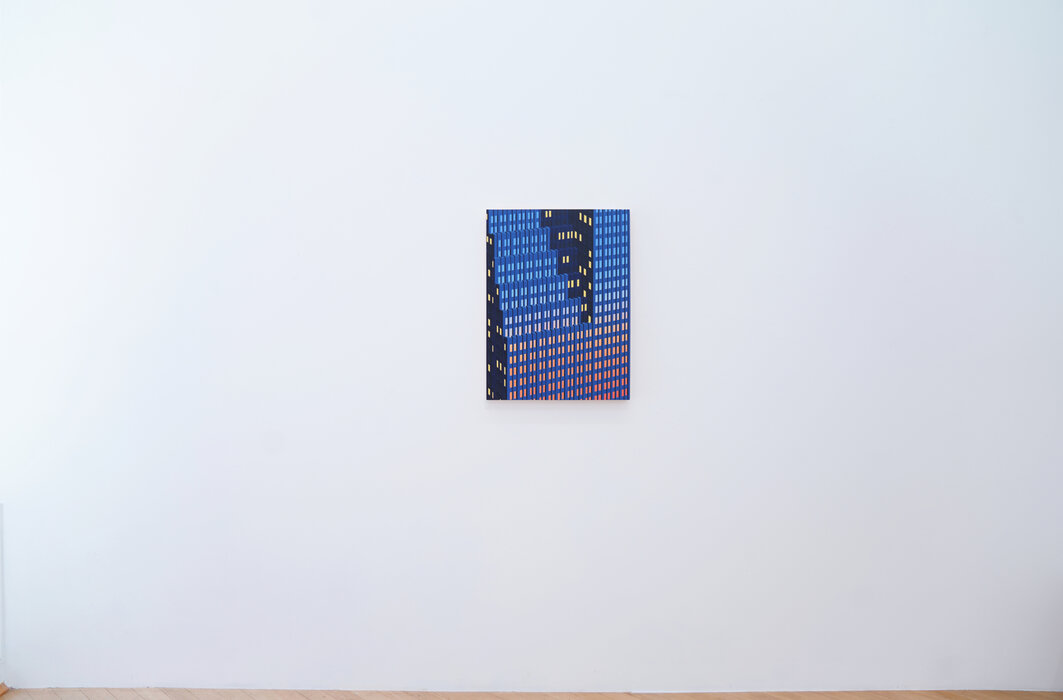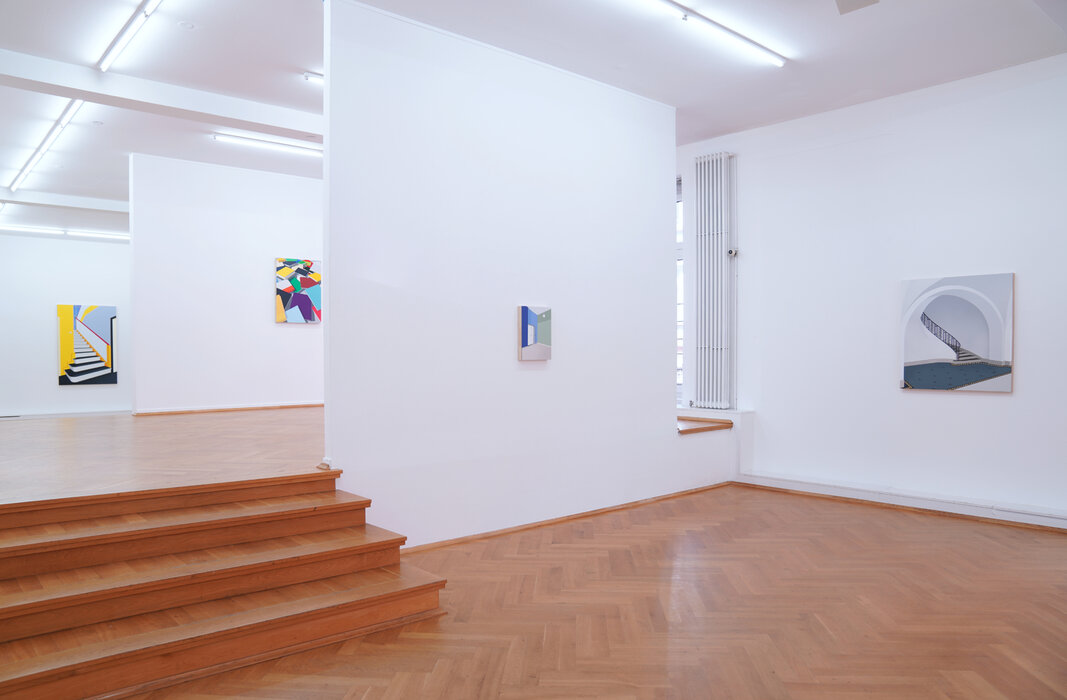Exhibition
Passages
13.06. - 30.08.2025
Opening: 12 June, 2025, 7 pm
Exhibition period: 13 June – 30 August 2025
Daniel Rich’s paintings serve as windows onto a world in which architecture acts as a silent witness to political and social events. Drawing upon photographs sourced from news media, his own images, or digital archives, Rich presents facades, interiors, and urban landscapes that, at first glance, appear immaculate and anonymous. Yet beneath their smooth surfaces lie complex narratives of power, utopia, and transformation.
For two decades, Rich has explored the surfaces and structures of buildings whose significance extends far beyond their mere function. His subjects range from iconic skyscrapers in the United States and socialist housing blocks in Berlin to modernist symbols such as Le Corbusier’s Unité d’Habitation and the Palazzo della Civiltà Italiana in Rome. Many of these locations have witnessed historic upheavals, political conflicts, or social experiments. Rich’s paintings “read” these edifices as archives of collective memory: they become projections of societal ideals and their failures, of shifting power structures and their evolution.
In the works featured in the current exhibition, Passages, Rich turns his focus to deserted interiors. These spaces, inspired by historical precedents such as Oskar Schlemmer’s Bauhaus Stairway or literary references to Hans Fallada, invite viewers to imagine themselves within the scene—as observers, guests, or voyeurs. The emptiness of these rooms creates a disquieting silence, alluding both to what has been and to what may come. In the absence of people, architecture becomes a mirror of societal conditions, a stage for the invisible.
Rich’s painting process is as meticulous as it is time-consuming. Each work begins with a photographic image, which the artist digitally manipulates to create a new aesthetic and conceptual context. Using stencils and a technique reminiscent of screen printing, he applies layer upon layer of acrylic paint before adding the final details with a fine brush. The result is a series of flat, almost hyperrealistic paintings whose clarity and rigour recall the New Objectivity movement or the photographic precision of Bernd and Hilla Becher—yet there remains an unsettling unreality, a moment of disquiet.
Whether depicting bank headquarters, government buildings, or social housing projects, Rich’s choice of subject is never arbitrary. His paintings address “failed utopias” and the continual transformation of political power structures. For example, the pristine facades of bank headquarters become symbols of the invisibility of social inequality, while socialist housing blocks oscillate between ideals and isolation. The works are never purely documentary; they are always reflections on perception, imagery, and the construction of reality.
The HKW Berlin—House of World Cultures—was built in 1957 as a congress hall by the American architect Hugh Stubbins and stands as an outstanding example of architecture as a demonstration of power during the Cold War. Its modern forms and technical audacity, particularly the doubly curved roof, served as propaganda for democracy, progress, and intellectual freedom, targeting the East in particular.
Similarly, the former motorway service station at the border crossing to the GDR at Dreilinden, better known as Checkpoint Bravo on the outskirts of Berlin, exemplifies West German pop architecture during the Cold War. Designed around 1970 by architect Rainer G. Rümmler, this now-listed building was deliberately conceived as an architectural exclamation mark and as a counterpoint to the functional, grey utilitarian structures of the GDR border facilities. It was intended to convey the West’s joie de vivre, openness, and modernity to travellers as they passed through the checkpoint.
Finally, the Bauhaus in Dessau, to which Daniel Rich dedicates works such as Meisterhaus Kandinsky and Meisterhaus Klee, was from its inception far more than just an artistic or architectural movement—it was profoundly political, and saw itself as part of a broader social awakening.
The exhibition Passages at Bernhard Knaus Fine Art brings together key works from various phases of Daniel Rich’s career. It invites us to understand architecture as a space of transition: a passage between history and the present, between private and public realms, between visibility and concealment. Rich’s paintings open windows—not only onto the world, but also onto the hidden structures that shape our coexistence.
Daniel Rich (b. 1977 in Ulm) lives and works in Blowing Rock, North Carolina, and Berlin. His works have been exhibited internationally and are included in major collections.
Exhibition period: 13 June – 30 August 2025
Daniel Rich’s paintings serve as windows onto a world in which architecture acts as a silent witness to political and social events. Drawing upon photographs sourced from news media, his own images, or digital archives, Rich presents facades, interiors, and urban landscapes that, at first glance, appear immaculate and anonymous. Yet beneath their smooth surfaces lie complex narratives of power, utopia, and transformation.
For two decades, Rich has explored the surfaces and structures of buildings whose significance extends far beyond their mere function. His subjects range from iconic skyscrapers in the United States and socialist housing blocks in Berlin to modernist symbols such as Le Corbusier’s Unité d’Habitation and the Palazzo della Civiltà Italiana in Rome. Many of these locations have witnessed historic upheavals, political conflicts, or social experiments. Rich’s paintings “read” these edifices as archives of collective memory: they become projections of societal ideals and their failures, of shifting power structures and their evolution.
In the works featured in the current exhibition, Passages, Rich turns his focus to deserted interiors. These spaces, inspired by historical precedents such as Oskar Schlemmer’s Bauhaus Stairway or literary references to Hans Fallada, invite viewers to imagine themselves within the scene—as observers, guests, or voyeurs. The emptiness of these rooms creates a disquieting silence, alluding both to what has been and to what may come. In the absence of people, architecture becomes a mirror of societal conditions, a stage for the invisible.
Rich’s painting process is as meticulous as it is time-consuming. Each work begins with a photographic image, which the artist digitally manipulates to create a new aesthetic and conceptual context. Using stencils and a technique reminiscent of screen printing, he applies layer upon layer of acrylic paint before adding the final details with a fine brush. The result is a series of flat, almost hyperrealistic paintings whose clarity and rigour recall the New Objectivity movement or the photographic precision of Bernd and Hilla Becher—yet there remains an unsettling unreality, a moment of disquiet.
Whether depicting bank headquarters, government buildings, or social housing projects, Rich’s choice of subject is never arbitrary. His paintings address “failed utopias” and the continual transformation of political power structures. For example, the pristine facades of bank headquarters become symbols of the invisibility of social inequality, while socialist housing blocks oscillate between ideals and isolation. The works are never purely documentary; they are always reflections on perception, imagery, and the construction of reality.
The HKW Berlin—House of World Cultures—was built in 1957 as a congress hall by the American architect Hugh Stubbins and stands as an outstanding example of architecture as a demonstration of power during the Cold War. Its modern forms and technical audacity, particularly the doubly curved roof, served as propaganda for democracy, progress, and intellectual freedom, targeting the East in particular.
Similarly, the former motorway service station at the border crossing to the GDR at Dreilinden, better known as Checkpoint Bravo on the outskirts of Berlin, exemplifies West German pop architecture during the Cold War. Designed around 1970 by architect Rainer G. Rümmler, this now-listed building was deliberately conceived as an architectural exclamation mark and as a counterpoint to the functional, grey utilitarian structures of the GDR border facilities. It was intended to convey the West’s joie de vivre, openness, and modernity to travellers as they passed through the checkpoint.
Finally, the Bauhaus in Dessau, to which Daniel Rich dedicates works such as Meisterhaus Kandinsky and Meisterhaus Klee, was from its inception far more than just an artistic or architectural movement—it was profoundly political, and saw itself as part of a broader social awakening.
The exhibition Passages at Bernhard Knaus Fine Art brings together key works from various phases of Daniel Rich’s career. It invites us to understand architecture as a space of transition: a passage between history and the present, between private and public realms, between visibility and concealment. Rich’s paintings open windows—not only onto the world, but also onto the hidden structures that shape our coexistence.
Daniel Rich (b. 1977 in Ulm) lives and works in Blowing Rock, North Carolina, and Berlin. His works have been exhibited internationally and are included in major collections.
Exhibited works

Daniel Rich

Daniel Rich

Daniel Rich

Daniel Rich

Daniel Rich

Daniel Rich

Daniel Rich

Daniel Rich

Daniel Rich

Daniel Rich
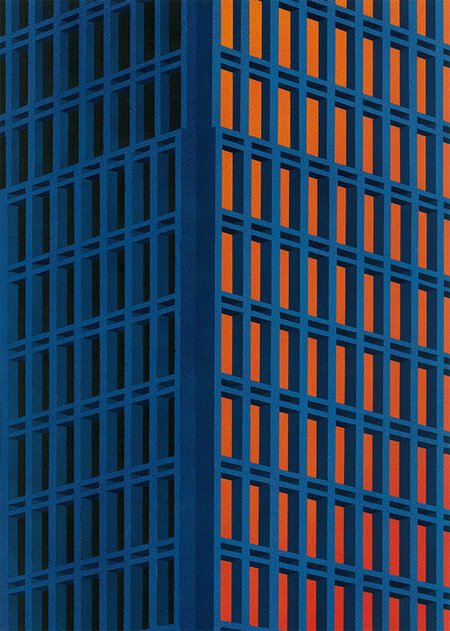
Daniel Rich

Daniel Rich

Daniel Rich

Daniel Rich
